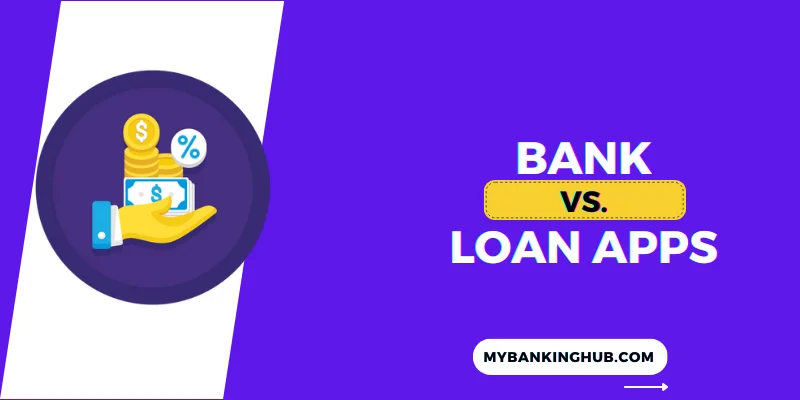Are you thinking about securing a personal loan soon? If the answer is yes, you’ve likely come across two primary channels for obtaining personal loans: traditional banks or financial institutions and innovative loan apps that leverage advanced technology to streamline the entire process. You might be wondering, what sets these two funding channels apart, and how you can ensure a swift personal loan without cumbersome delays or hassles? Let’s delve into the differences and procedural aspects of both these credit channels.
Banks vs Loan Apps: A Guide to Finding the Perfect Personal Loan Channel

1. Accessibility of Loans
When it comes to securing a personal loan through traditional means, you’ll need to physically visit the bank or lender and submit a stack of forms along with the requisite documents. This process remains unchanged even if you’ve conducted your initial research online. In contrast, online personal loans offer a seamless digital experience from start to finish. You can complete your application and submit documents digitally, and the loan amount is conveniently disbursed to your bank account through online transfers. Moreover, you have a wide array of options at your fingertips.
2. Time and Energy
Whether you’re seeking an instant personal loan, a flexible personal loan, or a rapid emergency loan, your ideal solution lies in a reputable loan app if you want to sidestep time-consuming and energy-draining efforts. These apps streamline the process, allowing you to swiftly check eligibility, fill out applications, and get loan approvals in mere minutes.
3. Human Interaction
In the world of online personal loans, all processes are conducted online, and human interaction is minimal. On the other hand, offline personal loans provide a personal touch, allowing you to interact with bank or company officials. While this may not appeal to digitally savvy millennials, it offers convenience to many. With online personal loans, you can apply anytime without the need for face-to-face meetings or personal interactions, making it a quick and efficient solution when urgency strikes.
4. Documentation
The documentation process involved in offline personal loans can be extensive and overwhelming. In contrast, online personal loans streamline the documentation to a bare minimum. You’re only required to upload essential documents digitally.
5. Security
Online lenders typically follow robust online security practices, ensuring the personal data you provide remains highly secure. In the case of offline loans, the risk of misplacing crucial paperwork is considerably higher.
6. Risks
Offline loans, especially when you engage with external agents, come with the risk of misinformation, inadequate information, and potential bias as agents may push products that benefit them. Online loans empower you to conduct thorough research independently. You can effortlessly compare different loan options and compute EMIs on the official websites of lenders, all at your convenience.
7. Loan Amounts and Interest Rates
Traditional banks often offer larger loan amounts, while loan apps, like KreditBee, usually approve credit for comparatively smaller amounts. Interest rates can vary across banks and fintech platforms, so it’s essential to compare them to make the best choice.
8. Procedural Differences
Securing a personal loan from a bank generally involves a series of steps:
- Visit the bank or lender in person.
- Engage with a representative to discuss available financial products.
- Fill out application forms and submit KYC documents, income proof, and other necessary paperwork.
- The lender scrutinizes all documents and the application.
- If any documents are missing, you are informed and asked to provide them.
- After a thorough review, the application is either approved or rejected.
- The loan amount is disbursed following the completion of all formalities.
- The funds are reflected in your account after a specified duration.
When applying for personal loans through loan apps, the steps are typically more streamlined:
- Register on the app or portal.
- Verify your mobile number and assess your eligibility.
- Complete the application form and upload the required documents.
- Receive instant approvals and prompt disbursals to your account after establishing repayment mechanisms and fulfilling other formalities.
Closing Thoughts
Understanding the differences between loan apps and banks can help you choose the right channel for your personal loan needs. Whether you prioritize convenience, minimal paperwork, or a personal touch, the choice ultimately depends on your individual preferences and requirements.